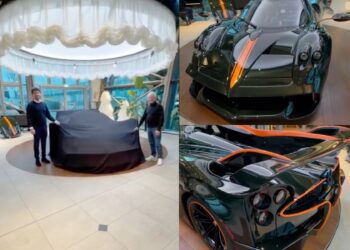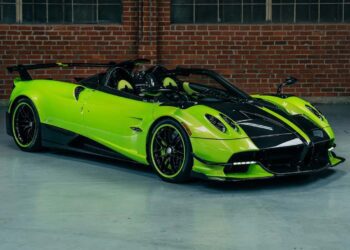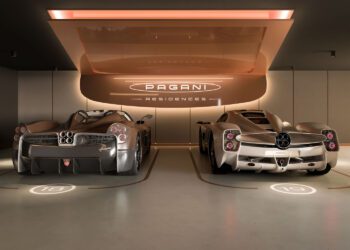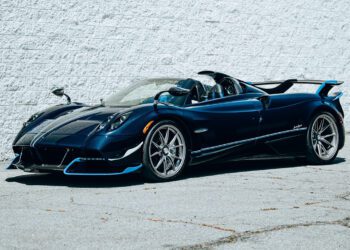Something odd is happening amongst the auto industry’s upper echelon. As most automakers focus on making their machines quicker, even at the cost of weight and driver engagement, hypercar manufacturers are moving in the opposite direction. In September of 2022, Pagani unveiled the Huayra’s successor, the Utopia, a V12-powered rolling piece of art that brought with it a surprise: a manual transmission. Today, the Italian carmaker revealed its roofless counterpart, the Pagani Utopia Roadster.
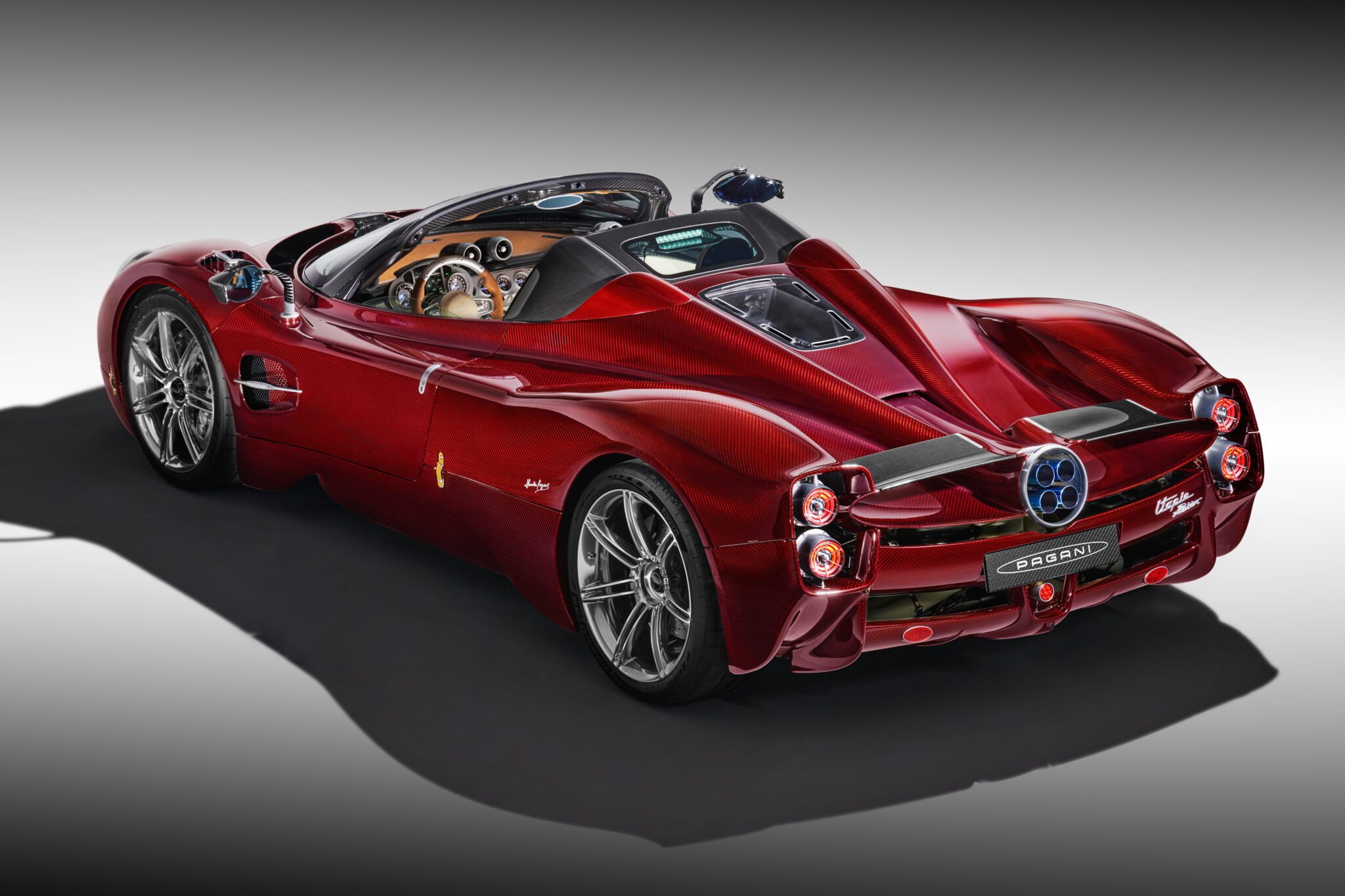
The Roadster’s recipe has become quite familiar. As with the Zonda and Huayra that preceded it, you won’t find a complex folding mechanism added to stow away its hard carbon-fiber and soft fabric roof options. By sticking with manually removable pieces, the Utopia Roadster and its extensive use of composite materials like Pagani’s Carbo-Titanium and Carbo-Triax retain its structural rigidity without adding unnecessary weight. The result is an open-top hypercar that weighs the same – 2,822 pounds dry – as the coupe.
Alongside its focus on lightness, the Pagani Utopia Roadster retains a Mercedes-AMG sourced 6.0-liter twin-turbocharged V12 as its powerhouse, now developing 864 horsepower and 811 pound-feet of torque. Unlike its predecessor, the Utopia offers the choice between an automated manual transmission or a proper seven-speed manual box designed in collaboration with Xtrac. These pair with a new electronic rear differential, allowing it to put its massive power output down exclusively through its rear wheels.
While Pagani has yet to publish full performance stats for its latest open-top hypercar, we at least know it’s electronically limited to 217 mph.
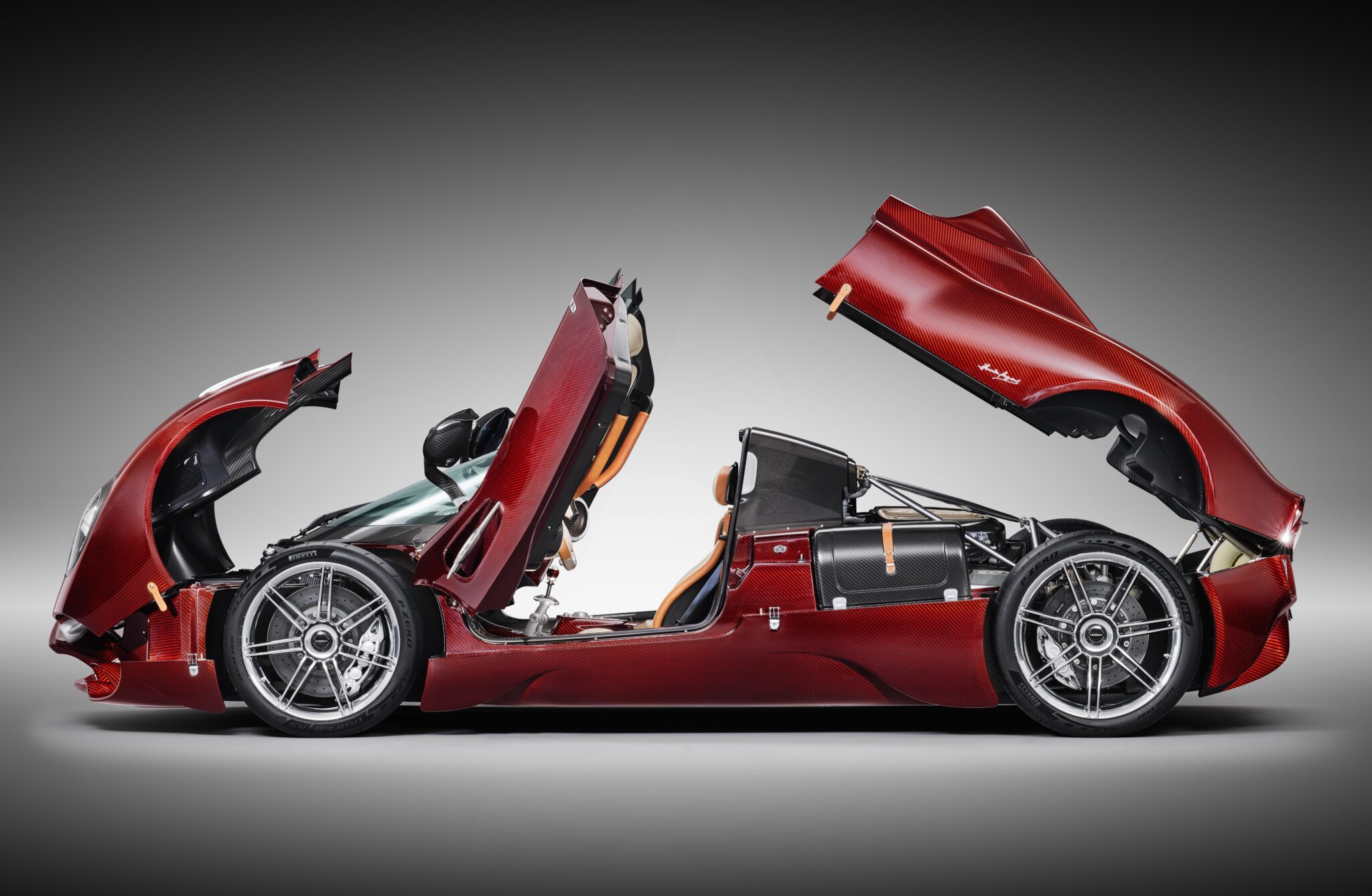
In a first for the Italian automaker, the Roadster will wear Pirelli’s Cyber Tire, measuring 265/35 R21 at the front and 325/30 R22 in the rear. Available in either P Zero Corsa, Winter, or Trofeo RS forms, they host sensors embedded into their tread. This allows the car to receive real-time information from its various stability and traction control systems to make continuous adjustments. These wrap around a set of staggered 21 and 22-inch wheels.
Given how much work went into dialing in the coupe from an aerodynamic perspective, Paganini chose to limit the changes between it and its latest Roadster. As such, it incorporates the same open front fascia characterized by two twin-beam headlights. Despite adding new removable roof pieces, the Utopia retains its teardrop silhouette, which feeds air over and around the engine compartment and into two massive air channels that emerge from its rear quarter panels. Its rear end incorporates two movable active pieces to channel the outflowing air while generating downforce.
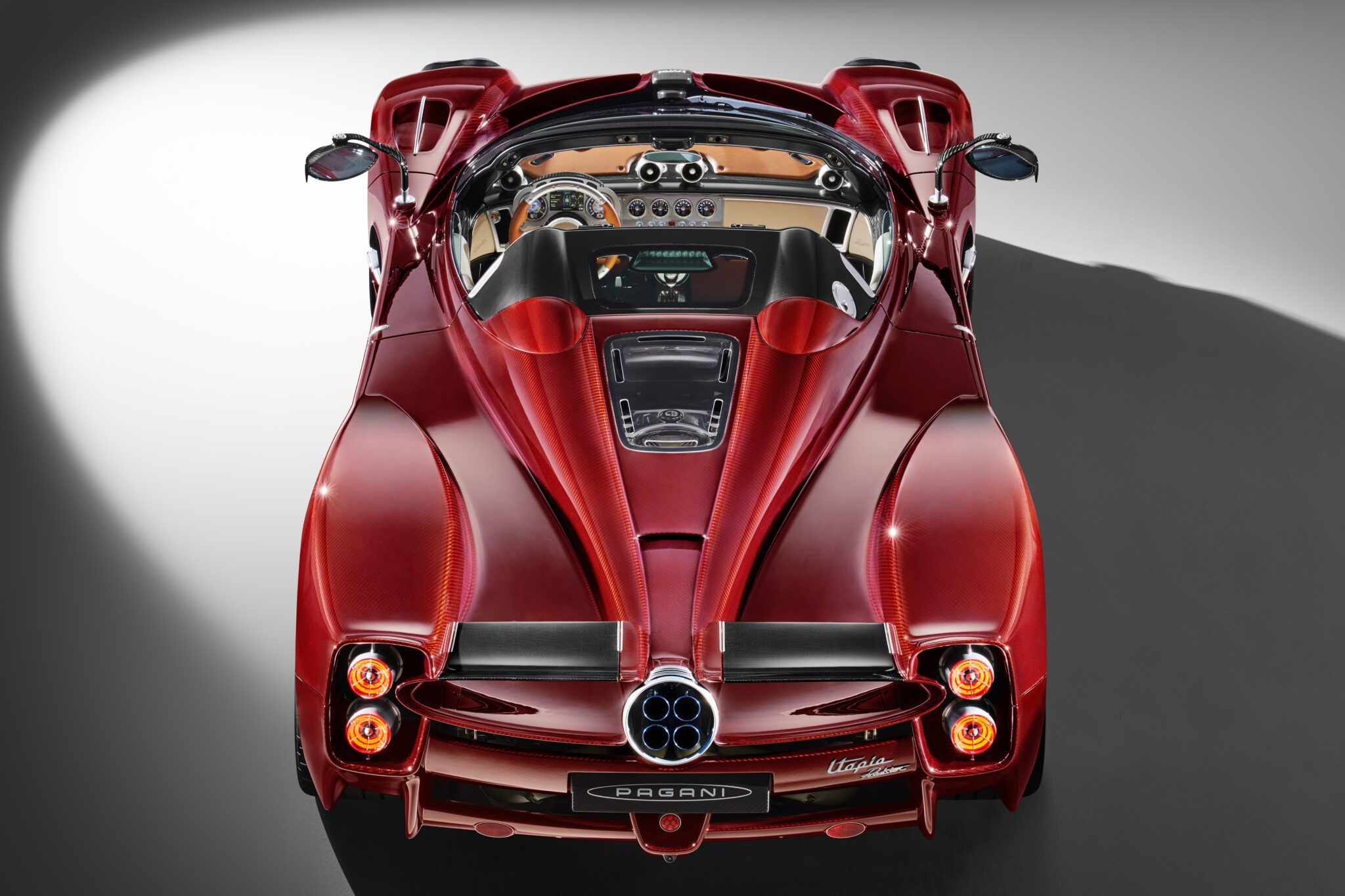
Presented wearing an exposed-carbon Habanero Red finish, the Pagani Utopia Roadster retains the coupe’s stunning looks while introducing a new Sport Pack available also for the coupe. Inside, you’ll find seats made of Carbo-Titanium to reduce their weight while its shift paddles, gear-lever, floor mats, and active aero components also adopt the lightweight material.
Inside, the Utopia Roadster builds on a design philosophy first introduced in the Zonda that focuses on beautifully sculpted analog features and exposed mechanical components. Its dashboard, center console, and instrument cluster comprise mostly analog dials, switches, and levers. Aside from providing Pagani with an opportunity to showcase its manufacturing prowess, this allows the cabin to retain its timelessness.
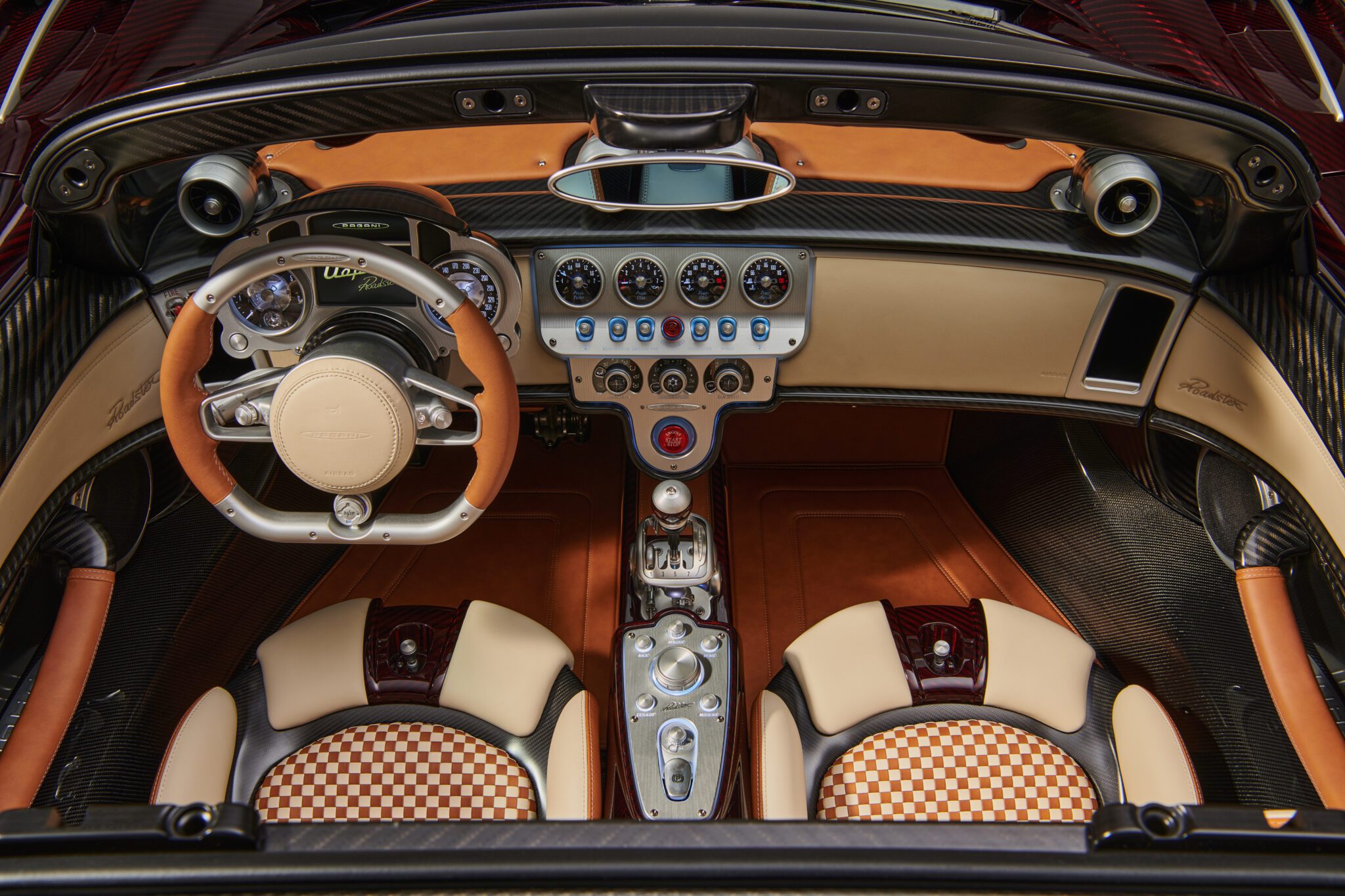
Unlike the split-window roof design seen in the coupe, its open-top counterpart employs a large glass piece for its composite roof option, allowing more light to permeate the cabin. However, an included fabric top blocks it out while allowing it to stow and fold between the two seats.
The Pagani Utopia Roadster will make its first public debut during Monterey Car Week with a presentation at The Quail, A Motorsports Gathering. The Italian carmaker plans to build just 150 units of its latest open-top creation, each with a starting price of €3.1 million or $3.35 million.
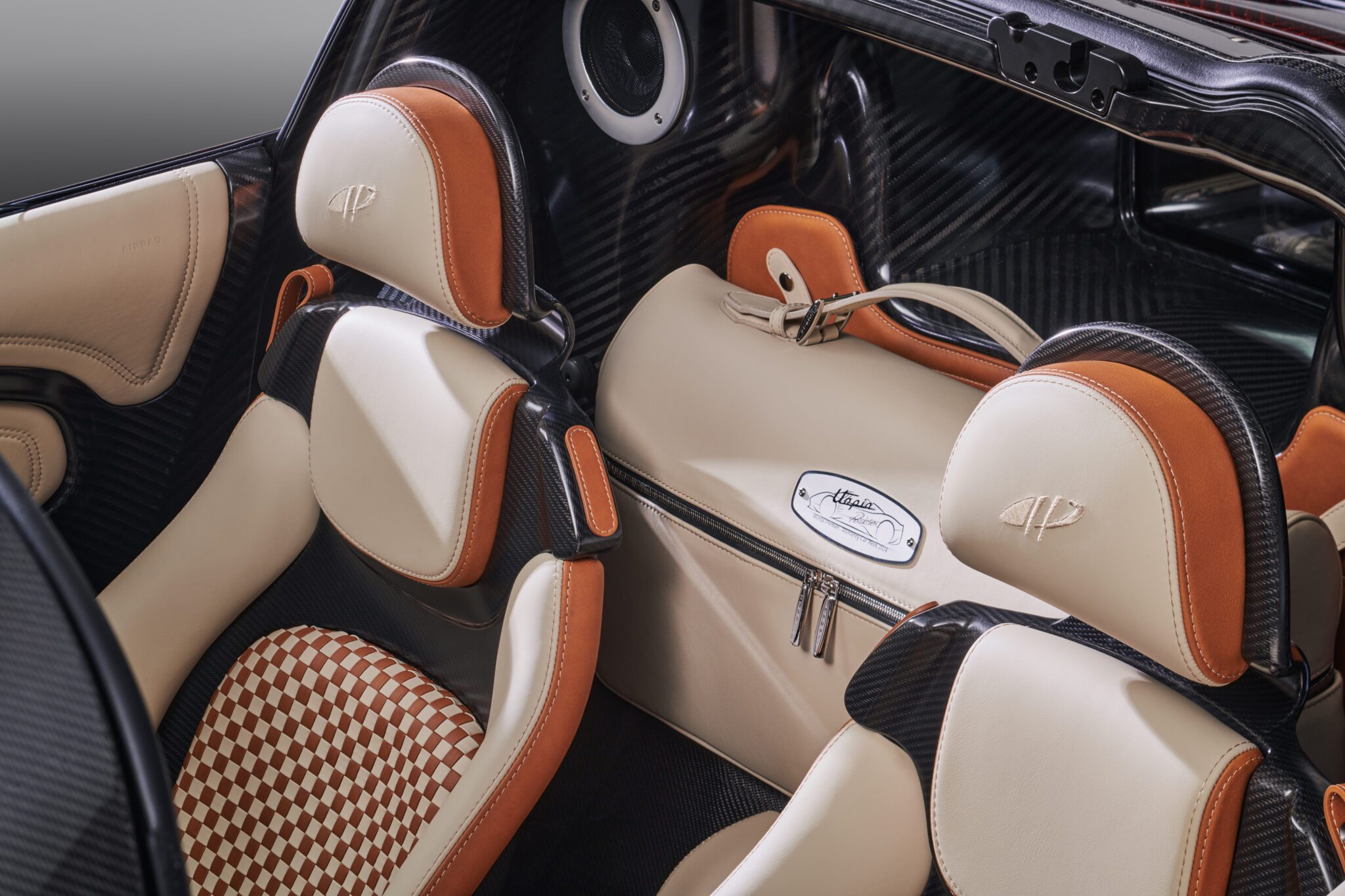
Alongside the coupe it introduced last year, Pagani and other hypercar manufacturers like it show a greater focus than ever on design and the driving experience. The Utopia takes this further by combining its aero-focused design with a beautifully sculpted cabin and a powerful V12 engine without any electrification. However, the inclusion of a new manual transmission option amongst these other elements shows that as the industry in general moves in one direction, the Italian carmaker continues to follow a unique path.



